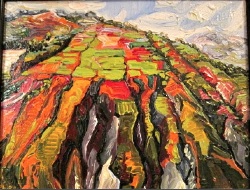
11″x 14″ Oil on Linen Canvas
by Marilene Phipps-Kettlewell
In this part of the INNERview, Marilene Phipps-Kettlewell touches upon the subjects of immigration, the massive earthquake that struck Haiti in January 2010. She speaks also of her critically acclaimed books of poetry, short stories, as well as the other art form for which she is known and loved: Painting.
Katia D. Ulysse When did you leave Haiti?
Marilène Phipps-Kettlewell: I first left Haïti when I was eleven years old. It’s been an experience of returns and leaving ever since.
Why did you leave?
Political insecurity.
How frequently do you go back?
It varies. Every year, every two years, sometimes more, sometimes less.
What do you do when you are there?
Visit family. Then, run off to the countryside—north, south, east and west—that’s the real Haïti for me, the one I love, and that inspires my paintings, my poetry, my stories.
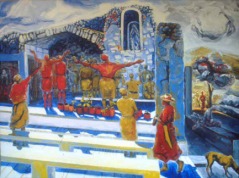
Do you consider Haïti to be “home,” or does another place claim that space?
There are times when I feel that I no longer have a home anywhere—homelessness is the acquired state of the exiled—once you have left, you can never return. There are times when I feel that home is inside of me, not dependent of the place where I stand or sleep. And there are times when I know that home is where my husband waits for me with open arms. And there are times when I am in Haïti, and it all feels, so, so singularly familiar, woven so deep in the very fabric of my being, the thread in my skin, the color or my blood, that I know for sure that this is Home.
For those among us who do not know what you do, please share with us.
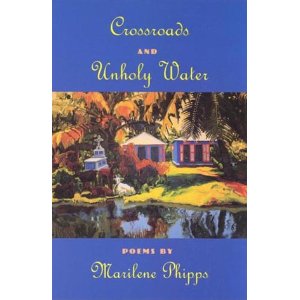 I am a painter, a poet and a short story writer. I have held fellowships at the Guggenheim Foundation, at Harvard University’s Bunting Institute, W.E.B. Du Bois Institute, and the Center for the Study of World Religions, and I was as well a recipient of a grant from the New England Foundation for the Arts.
I am a painter, a poet and a short story writer. I have held fellowships at the Guggenheim Foundation, at Harvard University’s Bunting Institute, W.E.B. Du Bois Institute, and the Center for the Study of World Religions, and I was as well a recipient of a grant from the New England Foundation for the Arts.
In 1993, I won the Grolier prize for poetry. In 2000, my poetry collection Crossroads and Unholy Water won the 1999 Crab Orchard Poetry Prize (also a finalist for the Walt Whitman prize from theAcademy ofAmerican Poets) and was published by Southern Illinois University Press.
My poetry was anthologized and published in England by Carcanet Press Ltd, in an anthology of seven Caribbean poets titled, “New Caribbean Poetry”. My poems can also be read in numerous other anthologies such as The Beacon Best of 1999, from Beacon Press, or Sisters of Caliban: Contemporary Women Poets of the Caribbean, from Azul Editions, as well as in literary magazines such as the Harvard Divinity Bulletin, Callaloo, Ploughshares and River Styx.
My short fiction was selected for The Best American Short Stories 2003, and my collection, The Company of Heaven: Stories from Haiti, won the 2010 Iowa Short fiction Award, published by the University of Iowa Press.
I am also the editor of the Jack Kerouac Collected Poems, published by the Library of America, in Fall 2012.
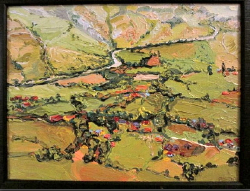
9″x 12″ Oil on Linen Canvas
by Marilene Phipps-Kettlewell
Fame is a garment drawn from raw silk, but that has the feel of synthetic silk.
My mother is also a painter. Had I not been a child eager to please her, I might not have turned out to be a painter. Writing was the thing I did all by myself, from an inner urge. But I have painted from an early age, just as I have written as soon as I could form letters. I had a show as an adolescent with my mother at Kalfou, an artist club/center, along with artists such as Bernard Wah and Raoul Viard, who were friends of my mother.
Yet, it is anthropology that I first studied at the University of California at Berkeley. But, I took all my electives in art. Once, my social anthology professor, Dr. Doumani, bumped into me in the hallways of the art department where I was hanging some large black and white works I made in class, drawing from the nude. He looked at them silently, and then turned to me, “Phipps! What the hell are you doing in anthropology?” I was both flattered and offended—I had worked hard to be a straight A student, and not to be told by one of the toughest professors that I belonged out of anthropology. Yet, these studies proved useful in my paintings afterwards, in my efforts to understand my culture at deep levels.
Unwittingly, my life took a sharp turn thereafter, and I returned to live in Haïti for a few years; I became a full time painter, amassing a portfolio that allowed me to be accepted directly into the MFA program at the University of Pennsylvania in Philadelphia. In the following years, both in school and after graduation, I painted feverishly; I produced a large body of work. I made yearly trips to Haïti, going to the countryside to search for inspiration, ideas, and to stir in me old emotions and yearnings whose secrets and keys were held in the land and its people.
Do you paint in the morning and write at night, or vice versa? Do you paint for a season—when you’re inspired; and write, also, when the inspiration comes? What is your work routine?
All of the above. It varies. God is the one who knows why and how.
How are painting and writing similar? Does inspiration comes from the same place?
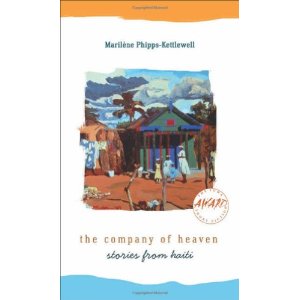 Yes, [inspiration comes from the same place]. It all comes from my psyche. All art forms are a kind of language, whether the vocabulary is visual, auditory or verbal. All art forms require passion and devotion to start with, and then all share similar concerns with tone, dosage, variation, movement, texture, expressivity, in order to articulate emotions and thought.
Yes, [inspiration comes from the same place]. It all comes from my psyche. All art forms are a kind of language, whether the vocabulary is visual, auditory or verbal. All art forms require passion and devotion to start with, and then all share similar concerns with tone, dosage, variation, movement, texture, expressivity, in order to articulate emotions and thought.
Are you writing now? Are you painting one piece at a time or several?
I am always writing. Whether I am writing or painting, I do work on one piece at a time—I am a wholehearted person—I give it all in one throw.
Which is the favorite of your paintings?
Always the latest.
About which book are you most pleased?
The one I need to write.
Marilène was at church when news of catastrophic 1/12/2010 earthquake reached her ears.
Was everyone in your family safe?
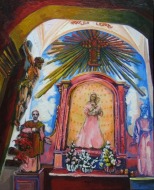 Yes and no—my immediate family has survived intact. The larger body of my family—Haitians—has been devastated, and has not yet recovered. I lost personal friends—I grieve the loss of Father Lespinasse who died in the Turgeau Seminary. He was in his room, getting ready to go teach a class. He was a rare, transcendent being with a huge heart. For years, he took care of orphans in his family home that he had transformed in an orphanage.
Yes and no—my immediate family has survived intact. The larger body of my family—Haitians—has been devastated, and has not yet recovered. I lost personal friends—I grieve the loss of Father Lespinasse who died in the Turgeau Seminary. He was in his room, getting ready to go teach a class. He was a rare, transcendent being with a huge heart. For years, he took care of orphans in his family home that he had transformed in an orphanage.
Have you created pieces of art that were inspired by the devastation or our people’s ability to resist?
Poetry mostly, and which I have read in numerous fundraising events for Haïti since the earthquake. The most advertised reading being “Poets For Haiti” which was held at Harvard University’s Longfellow Hall—17 poets participated, a handful were Haitians. A book of poems, under the same title, was published pro-bono, and all proceeds from book sales go to Partners for Health which has provided health care and hospitals in Haïti for many years.
How did it make you feel when everyone used the adjective “Resilient” to describe Haitians?
Proud.
Are you resilient?
Yes.
What are you most grateful for in your life today?
The love I have received.
I hope you have enjoyed learning more about this amazing daughter of Ayiti. For more information about Marilène Phipps-Kettlewell’s work, visit her web site: www.marilenephipps.com.
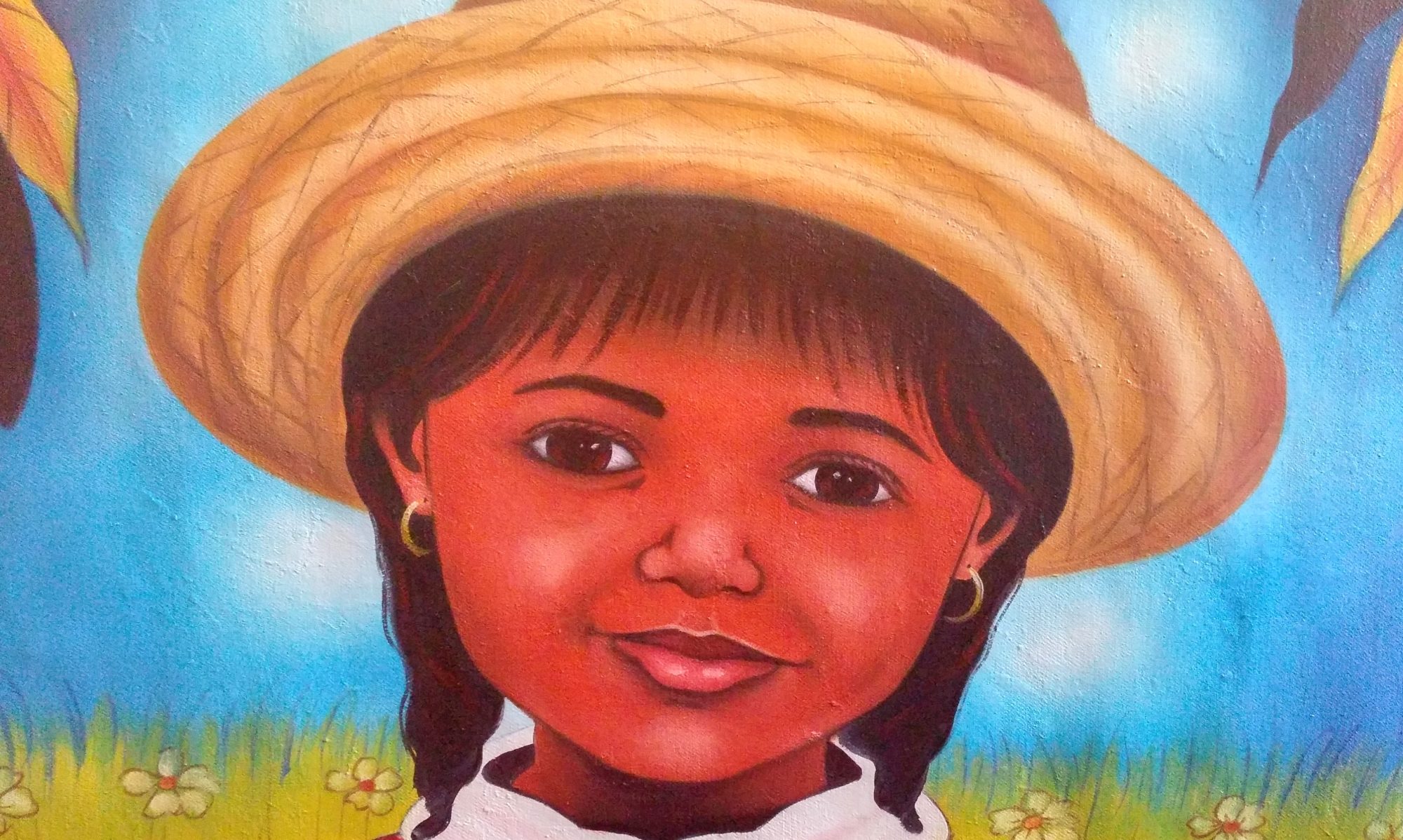
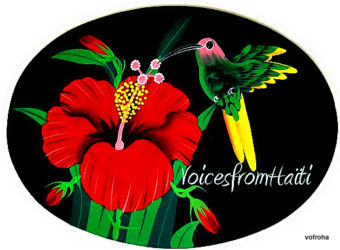
2 Replies to “Marilène Phipps-Kettlewell – VoicesfromHaiti INNERview (Part 2)”
Comments are closed.